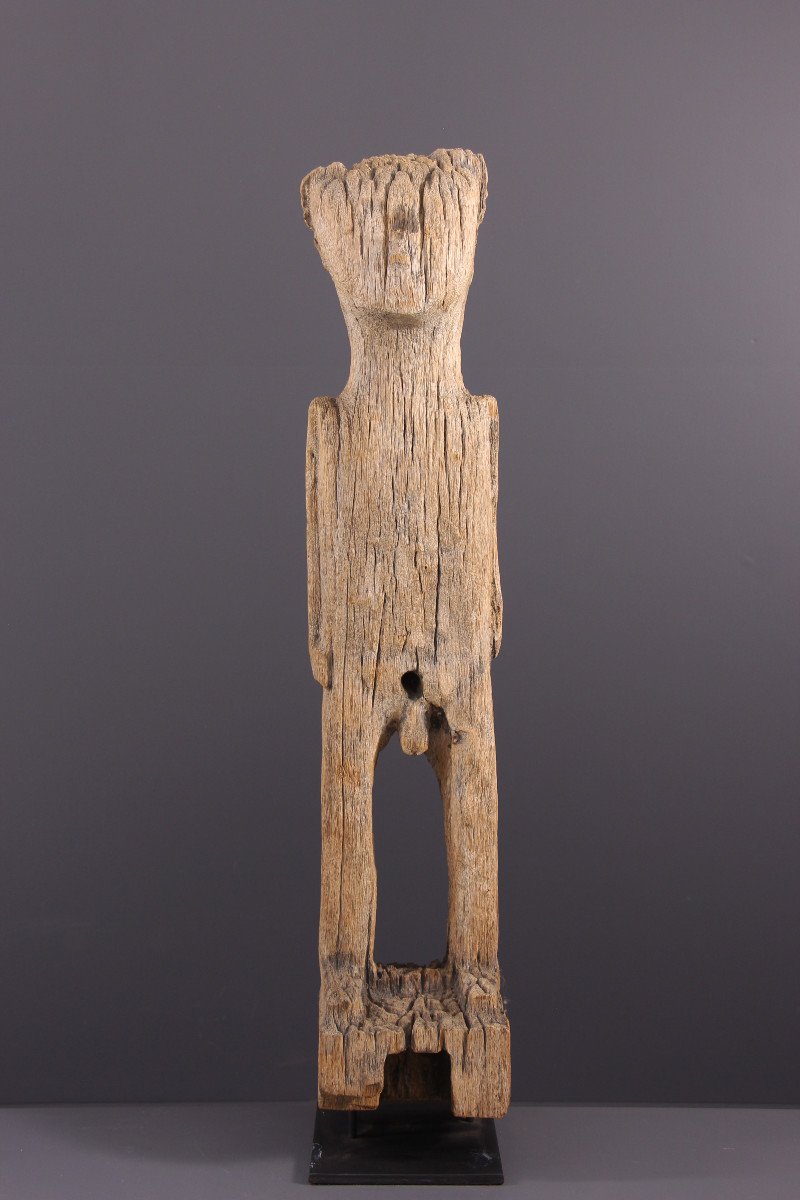The Malagasy are famous for their artistic expression, particularly through their statuary linked to funeral rituals. Statues of the Mahafaly, for example, were essential in the composition of the aloalo pillars, as evidenced by the panel fragments above the heads. Similarly, Sakalava ancestor figures, in three dimensions, often represent the deceased as well as their companion of the opposite sex. In Malagasy tradition, the northeastern position of the tomb is considered sacred, associated with dawn, resurrection and important moments such as circumcision. It was the ideal location to install the statue of the deceased. On the other hand, to the southwest of the tomb, the image of his partner of the opposite sex was placed, symbolizing an ideal union. Wind, salt and sand have carved and cracked these figures, giving the wood a characteristic dried-out patina, which results in a remarkable dullness and light hue. The tropical island of Madagascar, located off the coast of Mozambique, was first populated by Polynesians who, according to some theories, settled on the eastern coast of Africa. However, they were later repulsed by Arab and Muslim traders. From 1500, several kingdoms developed on the island, including that of the Sakalava on its west coast.
Item accompanied by its certificate of authenticity.
PS: what does the certificate of authenticity consist of? https://www.galerie-art-africain.com/faq.aspx?qid=8
PLEASE NOTE THE PRICE OF TRANSPORT INCLUDES LOSS, THEFT, BROKENAGE INSURANCE.
















































 Le Magazine de PROANTIC
Le Magazine de PROANTIC TRÉSORS Magazine
TRÉSORS Magazine Rivista Artiquariato
Rivista Artiquariato